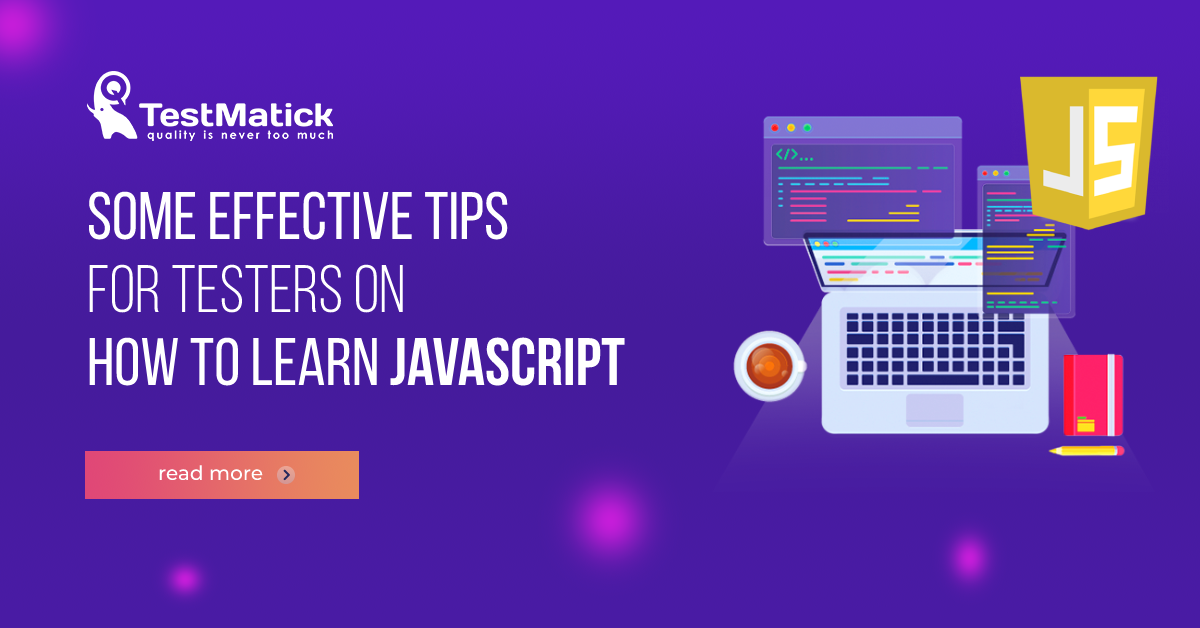First of all, we need to answer the question – why even do we need to learn JS?
In answering this question, we’ll indicate a few of the most important things:
- While testing software, one may learn its program code;
- Correct understanding of all the code features;
- To see the initial cause of defects in DevTools Console;
- To find work-around software defects;
- Automation of the testing process in a web browser;
- Ability to independently create auxiliary tools to facilitate the testing process;
- Optimizing the use of WebDriver JSExecutor;
- Just to navigate the mysterious and interesting discoveries that may surprise you while learning this language.
The process of learning JavaScript increases the surface area of the software system where a user can get particular information. Also, he/she can monitor the system performance, control, and manipulate it as the tests require.
All this increases the capacities of high-quality software testing, and as a result – the user’s ability to interact with various programs and supporting applications.
So, if you’re a junior tester who wants to learn JS or management of your software testing company asks you to do that, you have to heed our advice.

JavaScript
Tip #1: Automation in a Web Browser
On the Internet, there are a lot of useful courses that demonstrate in practice how to correctly and efficiently learn to perform software testing with JS.
An example – https://testautomationu.applitools.com/automating-in-the-browser-using-javascript/.
There are both paid and free material.
Tip #2: Eloquent JavaScript
Read free material – Eloquent JavaScript. Also, there is a practical code sandbox – https://eloquentjavascript.net/code/. These resources will become a great start for understanding the language peculiarities. The sandbox allows seeing program code, running, and editing it while studying new techniques and methods.
You have to puzzle out the language to understand it as a programmer who makes software.
Tip #3: JavaScript Enlightenment
Now we can proceed with JS Enlightenment. This material is targeted to modern technical specifications of JavaScript programming language.
Tip #4: Interpreting JS
Become familiar with Speaking JS. There is a lot of useful information and an extensive review of language syntax.
Tip #5: DOM Enlightenment
It would be useful to read such a course as DOM Enlightenment to have a more integrated understanding of how to use DOM. You will often do similar things performing automation in a web browser.
Tip #6: Patterns of JavaScript Technical Design
We recommend you to read this free material: JavaScript Design Patterns. JS is mostly used tactically in practice unless it comes to the main automation language or software.
One should take into account this peculiarity, especially when there is a lot of program code that has to be supported. Moreover, this resource will be useful for the practical understanding of program code written by other developers.
Tip #7: Useful and Available Snippets
Try a special Google Chrome extension – Useful Snippets. A great benefit of this plug-in is the option to see the JS performance in the DevTools console when you’re running the command.
These and many other tips, undoubtedly, will be useful for testers who want to learn JavaScript. This allows QA specialists to understand principles of user interface and hidden application behavior, use the best automation techniques, check vulnerabilities, expand the variability of the used automation frameworks.










Leave A Comment